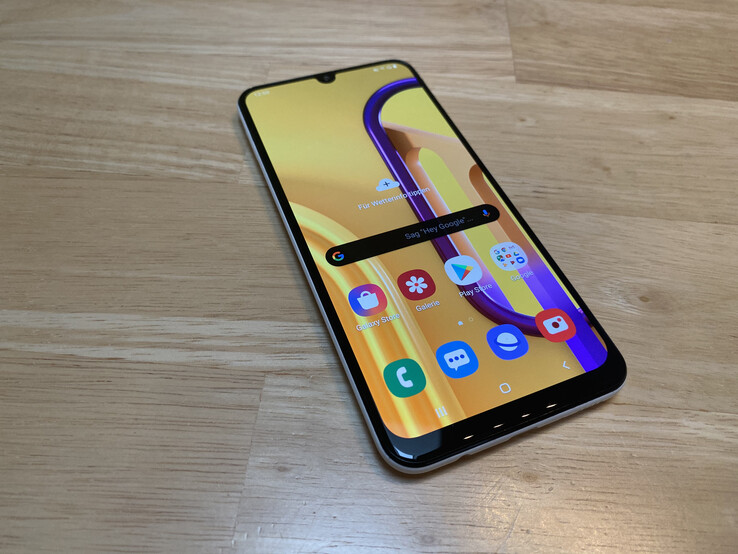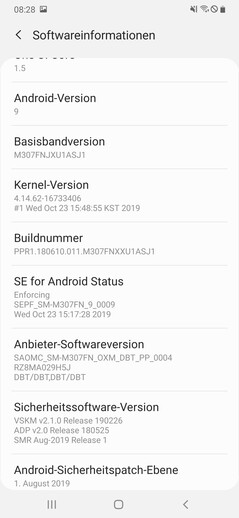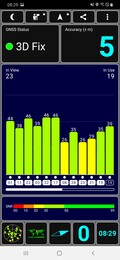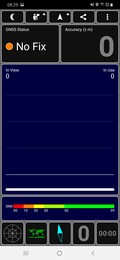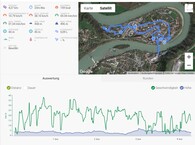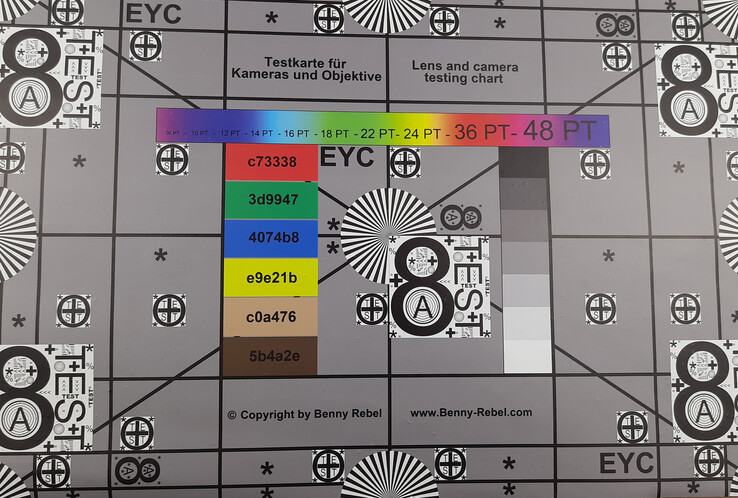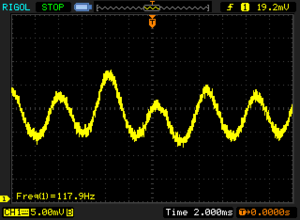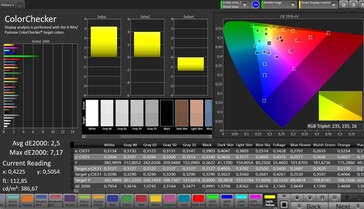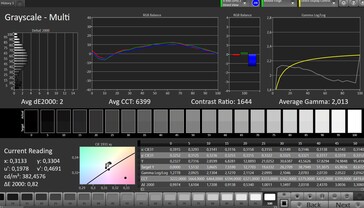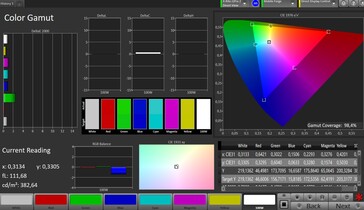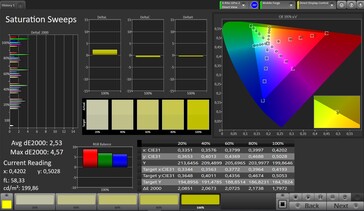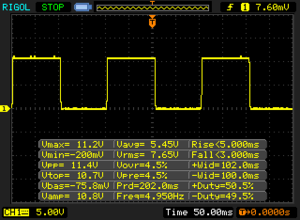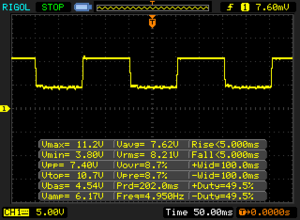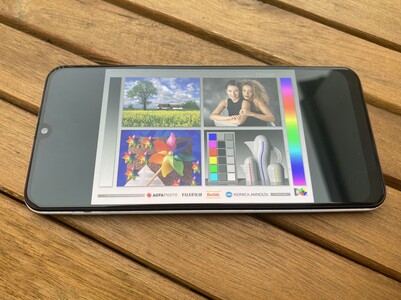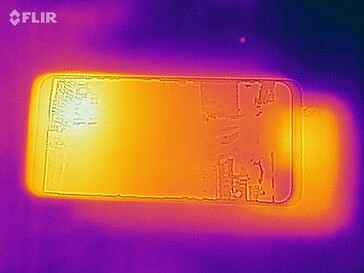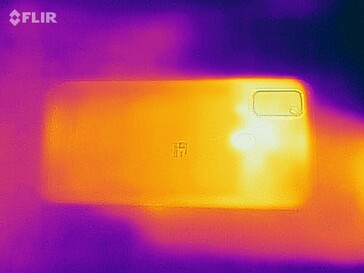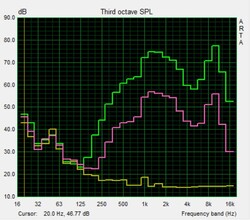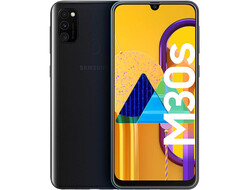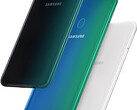Samsung Galaxy M30s Smartphone Review: A huge battery at an affordable price
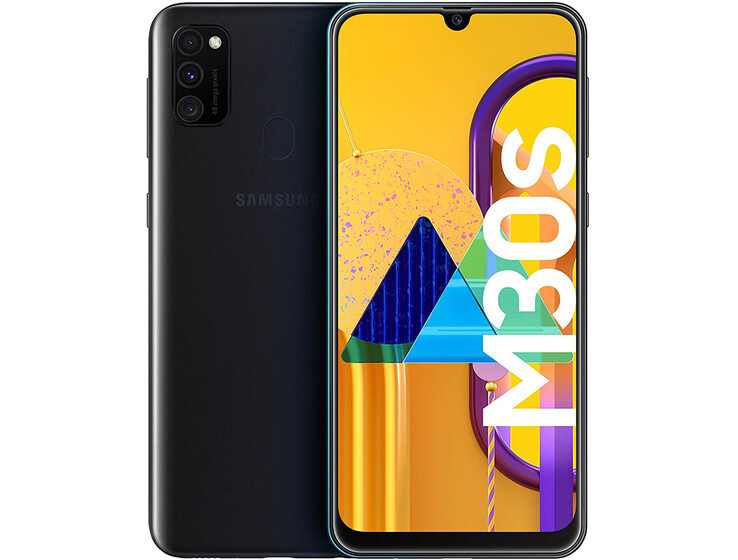
If you ask people what is important to them on their smartphone, two of the most important factors will likely be good cameras and long battery life. Samsung has sought to address these wishes for those who want to spend around 250 Euros (~US$275) on a smartphone with the Galaxy M30s, a handset that has three rear-facing cameras and a 6,000 mAh battery.
The M30s will not stand up against its competitors on battery life and cameras alone, though. Please see our table below that outlines the devices against which we will compare our review unit.
Device comparison
Rating | Date | Model | Weight | Drive | Size | Resolution | Price |
|---|---|---|---|---|---|---|---|
| 79.8 % v7 (old) | 11 / 2019 | Samsung Galaxy M30s Exynos 9611, Mali-G72 MP3 | 188 g | 64 GB UFS 2.1 Flash | 6.40" | 2340x1080 | |
| 79.2 % v7 (old) | 11 / 2019 | Xiaomi Redmi Note 8 SD 665, Adreno 610 | 190 g | 128 GB eMMC Flash | 6.30" | 2340x1080 | |
| 78.4 % v7 (old) | 11 / 2019 | Motorola Moto G8 Plus SD 665, Adreno 610 | 188 g | 64 GB eMMC Flash | 6.30" | 2280x1080 | |
| 78.4 % v7 (old) | 09 / 2019 | Xiaomi Mi A3 SD 665, Adreno 610 | 173.8 g | 64 GB UFS 2.1 Flash | 6.09" | 1560x720 | |
| 79.5 % v6 (old) | 04 / 2019 | Samsung Galaxy M20 Exynos 7904, Mali-G71 MP2 | 186 g | 64 GB eMMC Flash | 6.30" | 2340x1080 |
Case - High-quality plastic
The Galaxy M series is known for having high-quality plastic cases, and the M30s is no exception. Samsung sells the device in blue, black and white, all of which have glossy finishes. The plastic back picks up fingerprints quickly, at least our white version does anyway.
The M30s weighs 188 g and is 8.9 mm thick, making it impressively compact for a device with a 6,000 mAh battery. Our review unit is about as large as most of our comparison devices, although none come close to offering the same battery capacity as the M30s does. By comparison, the Cubot King Kong 3 and the Gigaset GX290, which have 6,000 and 6,200 mAh batteries, respectively, are significantly heavier and thicker than the M30s.
The M30s also has a relatively restrained design. Samsung has equipped the device with a somewhat unobtrusive rear-facing camera housing and a fingerprint scanner that sits flush with the back plastic, while the device also has a pleasingly small notch in its display. The device's rounded edges help it fit nicely in our hands too, and there are hardly any gaps between materials.
On a side note, the M30s does not have an IP rating. Hence, we would recommend keeping it away from water or dusty areas.
Connectivity - Fast internal storage, a microSD card reader and a headphone jack
Samsung equips the M30s with 4 GB of RAM and 64 GB of UFS 2.1 flash storage, making the device fairly well-equipped. However, the Xiaomi Redmi Note 8 has double the storage for roughly the same price, although it is the slower eMMC type.
The M30s has a microSD card reader too, which supports up to 512-GB cards. The card reader has a dedicated slot, allowing you to use two nano-SIMs and a microSD card simultaneously. Rounding off the connectivity is a USB Type-C port, which operates on the USB 2.0 standard.
Software - One UI 1.5 and permanent third-party apps
Samsung preinstalls One UI 1.5 on the M30s, an in-house version of Android 9.0 Pie. While we are fans of its simplicity and the many functions that it offers, we do not like that the South Korean firm has installed a few third-party apps. Frustratingly, some of these are advertising apps and cannot be uninstalled.
Worse still, our review unit had the 1 August 2019 set of security patches installed at the time of writing. Considering that we tested the device in November of the same year, leaving a new handset on three-month-old security patches is unacceptable by our standards.
Separately, Samsung should eventually roll-out One UI 2.0 to the M30s. The South Korean company has not confirmed when it will do so, though.
Communication & GPS - Fast Wi-Fi and accurate location services
The M30s cut a fine figure in our Wi-Fi tests. The device performed on par with the Xiaomi Redmi Note 8 in the two iperf3 Client tests that we ran, demolishing our other comparison devices in the process. We occasionally noticed some drops in transfer speeds, but overall the M30s performed well when tested with our Netgear Nighthawk AX12 router.
The device also supports up to 600 Mb/s download speeds over LTE, which is on par with many other midrange handsets. Our review unit maintained decent network reception during our tests, which we conducted mostly inside buildings in an urban environment.
| Networking | |
| iperf3 transmit AX12 | |
| Samsung Galaxy M30s | |
| Xiaomi Redmi Note 8 | |
| Xiaomi Mi A3 | |
| Motorola Moto G8 Plus | |
| Samsung Galaxy M20 | |
| iperf3 receive AX12 | |
| Xiaomi Redmi Note 8 | |
| Samsung Galaxy M30s | |
| Motorola Moto G8 Plus | |
| Xiaomi Mi A3 | |
| Samsung Galaxy M20 | |
While the M30s cannot locate us from inside of buildings, it manages to find a satellite fix with up to five metres accuracy outdoors. The device still needs a moment or two to find us outdoors though, and while Google Maps is not always completely accurate, it is good enough for general use. Likewise, the built-in compass worked well too.
We also took our review unit on a bike ride to compare its location accuracy against a Garmin Edge 520, one of our reference bike computers. The M30s impressed us here and managed to record our route relatively accurately. The device even does a better job than the Garmin does occasionally, as the screenshots of our loop around some houses below demonstrate. We prefer the route that the M30s plotted in the narrow streets of the old town more than the one that the Garmin did too. While the M30s got slightly out of kilter when we cycled over a bridge, we would recommend it for all navigation tasks.
Telephone Features & Call Quality - Loud, but with distortion
Samsung preinstalls its in-house suite of telephony apps on the M30s. The company lays out its phone app slightly differently than Google does, but most people should find their way around it soon enough. The system-wide dark mode applies to the phone app too, which is a nice touch.
The earpiece gets loud enough for even making calls from busy environments, so loud that people around you may overhear your conversation. However, its audio quality is mediocre, while we noticed some distortion now and then. Moreover, while the person on the other end of the line always remains intelligible throughout our call tests, their voice sounded rather dulled. The same applies to when making calls over the loudspeaker. Likewise, the microphone picks out our voice in most scenarios, but it occasionally distorts if we speak too loudly. Similarly, it struggles to capture soft sounds.
Cameras - Almost true zoom
The M30s has a rather large rear-facing camera housing, in which Samsung installs three sensors. Its primary camera is a 48 MP sensor that can interpolate four pixels into one for increased light sensitivity per pixel as the IMX586 can, for example. By default, the M30s shoots in 12 MP, but you can set the device to 48 MP if you prefer the latter resolution. There is also an ultra-wide-angle lens onboard, so theoretically the device should be capable of optical zoom. However, the default camera app does not offer stepless zoom, with it forcing you to select a sensor before you start zooming. The M30s uses its third lens for calculating depth of field information in portrait shots.
The primary camera struggles to capture many details of objects, but it does a much better job in environmental shots and landscapes. The sensor also has issues with exposing dark areas correctly, falling short of higher-quality smartphone cameras. However, the M30s has a decent and versatile set of cameras by current standards. Our review unit even performed comparatively well in low-light conditions, which surprised us.
You must also decide whether you want to use the primary or ultra-wide-angle camera before recording a video. While the former can record videos in up to 4K at 30 FPS, its autofocus is a bit slow by our reckoning. Conversely, the sensor reacts to changing lighting conditions relatively well.
There is also a 16 MP front-facing camera, which captures most scenes reasonably sharply. Our test shots look a bit grainy, though.
We also subjected our review unit to further camera tests under controlled lighting conditions. We encountered surprisingly large colour deviations here, with the main camera reproducing yellow tones more accurately than other colours. Our test chart looks sharp and vibrant too, with black text on coloured backgrounds being easy to read. Colour transitions are reasonably even as well, while there is only a slight drop in contrast towards the top corner of the image. Predictably, the sensor has a harder time reproducing our chart at 1 lux than it does under controlled lighting conditions.
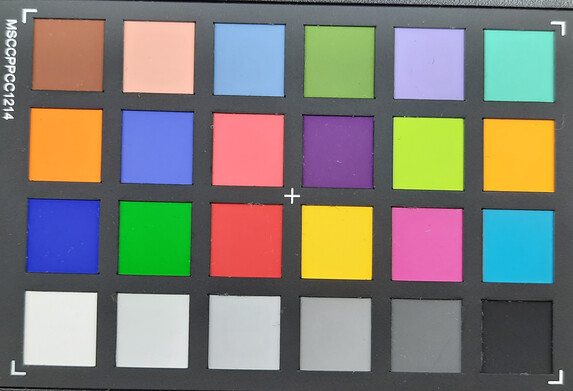

Accessories & Warranty - Limited accessories and regional restrictions
The M30s comes with a quick charger, a matching USB cable and card slot ejector tool. Samsung offers other accessories on its website, though.
Samsung includes a 24-month warranty with the M30s. Curiously, the South Korean company has imposed some regional restrictions on the handset. If you buy the device in the EU but want to use it in the US, for example, you must first insert an EU SIM card for at least five minutes before the device will recognise an American SIM card.
Please see our Guarantees, Return Policies & Warranties FAQ for country-specific information.
Input Devices & Operation - A precise touchscreen and fingerprint sensor
As we mentioned earlier, Samsung has placed a fingerprint sensor on the back of the M30s. A raised edge surrounds the sensor to help you feel it without looking at it, which is useful. The one in our review unit reliably unlocks the device but with a slight delay.
Likewise, the M30s has a precise touchscreen that remains accurate even into the edges of the display. One UI contains a setting for increasing the touchscreen's sensitivity too, should you want to apply a screen protector or use the device while wearing gloves.
Samsung preinstalls its in-house keyboard app, but you can replace this with your preferred one, as is the case on almost all modern Android smartphones. The default keyboard contains numerous settings, including the option of infinitely zooming in on characters within a given frame. It worked well during our tests.
Display - A bright and colour-accurate AMOLED panel
Samsung equips the M30s with an AMOLED display, which remains a rarity for a 250-Euro (~US$275) smartphone. Only the Xiaomi Mi A3 is as well equipped as the M30s is out of our comparison devices, with most OEMs still using IPS displays in their 250-Euro (~US$275) handsets. The AMOLED panel in the M30s is a big step-up from the TFT one in the Galaxy M20 too. Our review unit achieved a maximum average brightness of 597 cd/m² with automatic brightness on, according to X-Rite i1Pro 2. While the display does not get as bright as the one in the Xiaomi Redmi Note 8, it is bright enough for most environments.
The 6.4-inch panel operates natively at 2340x1080, which is a resolution that matches or betters those of our comparison devices. If you like vivid colours, then we would recommend using Samsung's vibrant colour mode. The South Korean company also includes a natural colour mode if that is more your thing.
| |||||||||||||||||||||||||
Brightness Distribution: 95 %
Center on Battery: 600 cd/m²
Contrast: ∞:1 (Black: 0 cd/m²)
ΔE ColorChecker Calman: 2.5 | ∀{0.5-29.43 Ø4.78}
ΔE Greyscale Calman: 2 | ∀{0.09-98 Ø5}
98.4% sRGB (Calman 2D)
Gamma: 2.013
CCT: 6399 K
| Samsung Galaxy M30s Super AMOLED, 2340x1080, 6.4" | Xiaomi Redmi Note 8 IPS, 2340x1080, 6.3" | Motorola Moto G8 Plus IPS, 2280x1080, 6.3" | Xiaomi Mi A3 AMOLED, 1560x720, 6.1" | Samsung Galaxy M20 PLS TFT, 2340x1080, 6.3" | |
|---|---|---|---|---|---|
| Screen | 22% | -56% | -70% | -73% | |
| Brightness middle (cd/m²) | 600 | 656 9% | 597 0% | 348 -42% | 452 -25% |
| Brightness (cd/m²) | 597 | 643 8% | 596 0% | 355 -41% | 445 -25% |
| Brightness Distribution (%) | 95 | 95 0% | 93 -2% | 91 -4% | 92 -3% |
| Black Level * (cd/m²) | 0.54 | 0.52 | 0.41 | ||
| Colorchecker dE 2000 * | 2.5 | 1.1 56% | 5.93 -137% | 5.86 -134% | 5.3 -112% |
| Colorchecker dE 2000 max. * | 7.17 | 2.4 67% | 9.42 -31% | 15.6 -118% | 9.5 -32% |
| Greyscale dE 2000 * | 2 | 2.2 -10% | 5.3 -165% | 3.6 -80% | 6.8 -240% |
| Gamma | 2.013 109% | 2.2 100% | 2.232 99% | 2.232 99% | 2.23 99% |
| CCT | 6399 102% | 6263 104% | 7632 85% | 7051 92% | 8355 78% |
| Contrast (:1) | 1215 | 1148 | 1102 |
* ... smaller is better
Screen Flickering / PWM (Pulse-Width Modulation)
| Screen flickering / PWM detected | 118 Hz | ||
The display backlight flickers at 118 Hz (worst case, e.g., utilizing PWM) . The frequency of 118 Hz is very low, so the flickering may cause eyestrain and headaches after extended use. In comparison: 53 % of all tested devices do not use PWM to dim the display. If PWM was detected, an average of 8108 (minimum: 5 - maximum: 343500) Hz was measured. | |||
We tested our review unit set to the natural mode, which delivers decent colour accuracy. The display reproduces most tones in line with the sRGB colour space to the naked eye, which is something that CalMAN supports. Theoretically, the M30s is colour accurate enough on which to edit photos reasonably well before printing them. CalMAN demonstrated that our review unit covered most of the sRGB colour space too, although these results are more indicative than anything else.
As the information above demonstrates, the screen also flickers at 118 Hz regardless of the brightness to which we set it. The flickering is not necessarily pulse-width modulation (PWM), but we would recommend trying the handset before you buy it if you are PWM sensitive. Incidentally, the display has comparatively short response times, which may please some gamers.
Display Response Times
| ↔ Response Time Black to White | ||
|---|---|---|
| 8 ms ... rise ↗ and fall ↘ combined | ↗ 5 ms rise | |
| ↘ 3 ms fall | ||
| The screen shows fast response rates in our tests and should be suited for gaming. In comparison, all tested devices range from 0.1 (minimum) to 240 (maximum) ms. » 21 % of all devices are better. This means that the measured response time is better than the average of all tested devices (20.2 ms). | ||
| ↔ Response Time 50% Grey to 80% Grey | ||
| 10 ms ... rise ↗ and fall ↘ combined | ↗ 5 ms rise | |
| ↘ 5 ms fall | ||
| The screen shows good response rates in our tests, but may be too slow for competitive gamers. In comparison, all tested devices range from 0.165 (minimum) to 636 (maximum) ms. » 22 % of all devices are better. This means that the measured response time is better than the average of all tested devices (31.6 ms). | ||
Performance - A fast and slightly revised SoC
Samsung has equipped the M30s with its Exynos 9611, an SoC that offers only minor improvements over the Exynos 9610. Specifically, the Exynos 9611 supports better camera modules than the Exynos 9610 does, but both have eight processor cores evenly split across performance and power-saving clusters.
Our review unit performed well in synthetic benchmarks, with it often being on par or slightly ahead of our comparison devices. Its ARM Mali-G72 MP3 GPU also offers class-typical performance.
| PCMark for Android | |
| Work performance score (sort by value) | |
| Samsung Galaxy M30s | |
| Xiaomi Redmi Note 8 | |
| Motorola Moto G8 Plus | |
| Xiaomi Mi A3 | |
| Samsung Galaxy M20 | |
| Average Samsung Exynos 9611 (5777 - 6697, n=7) | |
| Work 2.0 performance score (sort by value) | |
| Samsung Galaxy M30s | |
| Xiaomi Redmi Note 8 | |
| Motorola Moto G8 Plus | |
| Xiaomi Mi A3 | |
| Samsung Galaxy M20 | |
| Average Samsung Exynos 9611 (5080 - 5925, n=7) | |
| Basemark GPU 1.1 | |
| 1920x1080 Vulkan Medium Offscreen (sort by value) | |
| Samsung Galaxy M30s | |
| Xiaomi Redmi Note 8 | |
| Average Samsung Exynos 9611 (n=1) | |
| Vulkan Medium Native (sort by value) | |
| Samsung Galaxy M30s | |
| Xiaomi Redmi Note 8 | |
| Xiaomi Mi A3 | |
| Average Samsung Exynos 9611 (n=1) | |
| 1920x1080 OpenGL Medium Offscreen (sort by value) | |
| Samsung Galaxy M30s | |
| Xiaomi Redmi Note 8 | |
| Xiaomi Mi A3 | |
| Average Samsung Exynos 9611 (n=1) | |
| VRMark - Amber Room (sort by value) | |
| Samsung Galaxy M30s | |
| Xiaomi Redmi Note 8 | |
| Xiaomi Mi A3 | |
| Average Samsung Exynos 9611 (n=1) | |
The M30s also proved to be one of the fastest devices in its class in the browser benchmarks that we ran. Our review unit loads websites quickly, but we found ourselves waiting an additional few seconds before media content appeared.
| Jetstream 2 - 2.0 Total Score | |
| Average of class Smartphone (23.8 - 387, n=150, last 2 years) | |
| Xiaomi Mi A3 (Chrome 76) | |
| Xiaomi Redmi Note 8 (Chrome 78) | |
| Motorola Moto G8 Plus (Chrome 78) | |
| Samsung Galaxy M30s (Chrome 78) | |
| Average Samsung Exynos 9611 (27.5 - 30.6, n=7) | |
| Samsung Galaxy M20 (Samsung Brwoser 9.2) | |
| JetStream 1.1 - Total Score | |
| Samsung Galaxy M30s (Chrome 78) | |
| Xiaomi Mi A3 (Chrome 76) | |
| Average Samsung Exynos 9611 (47.5 - 51.9, n=7) | |
| Xiaomi Redmi Note 8 (Chrome 78) | |
| Motorola Moto G8 Plus (Chrome 78) | |
| Samsung Galaxy M20 (Samsung Browser 9.2) | |
| Speedometer 2.0 - Result 2.0 | |
| Average of class Smartphone (15.2 - 643, n=123, last 2 years) | |
| Xiaomi Redmi Note 8 (Chrome 78) | |
| Samsung Galaxy M30s (Chrome 78) | |
| Motorola Moto G8 Plus (Chrome 78) | |
| Xiaomi Mi A3 (Chome 76) | |
| Average Samsung Exynos 9611 (26.6 - 30.5, n=7) | |
| Samsung Galaxy M20 | |
| WebXPRT 3 - Overall | |
| Average of class Smartphone (38 - 380, n=32, last 2 years) | |
| Xiaomi Mi A3 (Chrome 76) | |
| Average Samsung Exynos 9611 (46 - 57, n=7) | |
| Samsung Galaxy M20 | |
| Xiaomi Redmi Note 8 (Chrome 78) | |
| Motorola Moto G8 Plus (Chrome 78) | |
| Samsung Galaxy M30s (Chrome 78) | |
| Octane V2 - Total Score | |
| Average of class Smartphone (2228 - 121337, n=198, last 2 years) | |
| Samsung Galaxy M30s (Chrome 78) | |
| Average Samsung Exynos 9611 (7442 - 10687, n=7) | |
| Xiaomi Redmi Note 8 (Chrome 78) | |
| Xiaomi Mi A3 (Chrome 76) | |
| Motorola Moto G8 Plus (Chrome 78) | |
| Samsung Galaxy M20 | |
| Mozilla Kraken 1.1 - Total | |
| Average Samsung Exynos 9611 (4332 - 6212, n=7) | |
| Xiaomi Mi A3 (Chrome 76) | |
| Xiaomi Redmi Note 8 (Chrome 78) | |
| Motorola Moto G8 Plus (Chrome 78) | |
| Samsung Galaxy M30s (Chrome 78) | |
| Samsung Galaxy M20 | |
| Average of class Smartphone (257 - 28190, n=154, last 2 years) | |
* ... smaller is better
Likewise, the UFS 2.1 flash storage with which Samsung has equipped the M30s achieved comparatively good transfer speeds in AndroBench. While the M30s did not outperform all our comparison devices in all tasks, it finished at the top of our comparison table overall. In short, the M30s should load apps and files more quickly than all our comparison devices can.
The M30s coped well in AndroBench's microSD card benchmarks too, regardless of whether we formatted our Toshiba Exceria Pro M501 reference card in exFAT or FAT32. Our review unit finished second to its predecessor here but achieved considerably higher write speeds than our other comparison devices could.
| Samsung Galaxy M30s | Xiaomi Redmi Note 8 | Motorola Moto G8 Plus | Xiaomi Mi A3 | Samsung Galaxy M20 | Average 64 GB UFS 2.1 Flash | Average of class Smartphone | |
|---|---|---|---|---|---|---|---|
| AndroBench 3-5 | -24% | -17% | -8% | -28% | 1% | 374% | |
| Sequential Read 256KB (MB/s) | 483.6 | 297.6 -38% | 302.5 -37% | 502 4% | 300 -38% | 696 ? 44% | 2227 ? 361% |
| Sequential Write 256KB (MB/s) | 190.7 | 160.5 -16% | 217.4 14% | 184 -4% | 137 -28% | 224 ? 17% | 1848 ? 869% |
| Random Read 4KB (MB/s) | 133.8 | 84.8 -37% | 59.9 -55% | 126.9 -5% | 64 -52% | 137.2 ? 3% | 295 ? 120% |
| Random Write 4KB (MB/s) | 137.1 | 91.2 -33% | 124.9 -9% | 117.4 -14% | 44 -68% | 84.7 ? -38% | 334 ? 144% |
| Sequential Read 256KB SDCard (MB/s) | 74.2 ? | 71.6 ? -4% | 72.6 ? -2% | 67.8 ? -9% | 81.5 ? 10% | 68.6 ? -8% | |
| Sequential Write 256KB SDCard (MB/s) | 61.1 ? | 52.8 ? -14% | 52.2 ? -15% | 50.1 ? -18% | 65.3 ? 7% | 52.2 ? -15% |
Games - 60 FPS gaming, for the most part
The ARM Mali-G72 MP3 GPU is powerful enough for 60 FPS gaming, but not in all titles that we tested. Our review unit had no issues with maintaining 60 FPS in Arena of Valor on high graphics, for example. Frame rates only dropped below that threshold in Shadow Fight 3 on high graphics between rounds. Hence, this slight throttling does not impact on playability.
However, the M30s could not maintain 30 FPS stably in Asphalt 9: Legends even at low graphics. The game remains playable at these frame rates in our opinion, but you probably need a more powerful smartphone if you are a fan of the fast-paced racing game. Incidentally, the touchscreen and all sensors worked perfectly during our gaming tests.
Emissions - Low surface temperatures, but thermal throttling and a mediocre speaker
Temperature
The M30s hardly heats up even under sustained load. The hottest area of our review unit only peaked at 36 °C, while most of the device remained below 30 °C. 36 °C will feel warm to the touch, but not dangerously so. Similarly, the M30s always stayed cool when idling.
We also tested how well the M30s performed under continuous load by running GFXBench benchmarks on a loop. While most smartphones throttle eventually, our review unit restricted its SoC by about two-thirds by the 18th benchmark pass. In short, expect to see the M30s suffer from frame rate drops during prolonged gaming sessions.
(+) The maximum temperature on the upper side is 36 °C / 97 F, compared to the average of 35.2 °C / 95 F, ranging from 21.9 to 247 °C for the class Smartphone.
(+) The bottom heats up to a maximum of 33.9 °C / 93 F, compared to the average of 34 °C / 93 F
(+) In idle usage, the average temperature for the upper side is 27.1 °C / 81 F, compared to the device average of 32.9 °C / 91 F.
Speakers
The M30s, like the Galaxy M20, has a mono speaker that sounds rather shrill to our ears. This is especially true at maximum volume, as the speaker does not reproduce frequencies linearly. The speaker in our review unit hardly reproduces any bass tones either, with those that it can deliver being masked by high-pitched frequencies.
Overall, the Xiaomi Mi A3 offers a better listening experience than the M30s does. However, you will probably have no complaints about the M30s if you only occasionally use its mono speaker. Alternatively, you could use Bluetooth or the headphone jack for listening to music, watching videos or making calls. Both methods worked without any issues during our tests.
Samsung Galaxy M30s audio analysis
(+) | speakers can play relatively loud (82.8 dB)
Bass 100 - 315 Hz
(-) | nearly no bass - on average 66.3% lower than median
(+) | bass is linear (0% delta to prev. frequency)
Mids 400 - 2000 Hz
(-) | nearly no mids - on average 66.3% lower than median
(+) | mids are linear (0% delta to prev. frequency)
Highs 2 - 16 kHz
(-) | nearly no highs - on average 66.3% lower than median
(+) | highs are linear (0% delta to prev. frequency)
Overall 100 - 16.000 Hz
(-) | overall sound is not linear (119.6% difference to median)
Compared to same class
» 88% of all tested devices in this class were better, 9% similar, 3% worse
» The best had a delta of 11%, average was 35%, worst was 134%
Compared to all devices tested
» 96% of all tested devices were better, 3% similar, 1% worse
» The best had a delta of 4%, average was 24%, worst was 134%
Samsung Galaxy M20 audio analysis
(+) | speakers can play relatively loud (83.3 dB)
Bass 100 - 315 Hz
(-) | nearly no bass - on average 31.1% lower than median
(±) | linearity of bass is average (9% delta to prev. frequency)
Mids 400 - 2000 Hz
(+) | balanced mids - only 4.1% away from median
(+) | mids are linear (5.2% delta to prev. frequency)
Highs 2 - 16 kHz
(+) | balanced highs - only 2.5% away from median
(+) | highs are linear (3.6% delta to prev. frequency)
Overall 100 - 16.000 Hz
(±) | linearity of overall sound is average (20% difference to median)
Compared to same class
» 32% of all tested devices in this class were better, 9% similar, 60% worse
» The best had a delta of 11%, average was 35%, worst was 134%
Compared to all devices tested
» 50% of all tested devices were better, 8% similar, 41% worse
» The best had a delta of 4%, average was 24%, worst was 134%
Power Management - A 6,000 mAh battery and exceptional runtimes
Power Consumption
The M30s consumed about as much as the Galaxy M20 during our tests, making it not as efficient as the Xiaomi Redmi Note 8. However, the M30s consumes less on average than the power-hungry Motorola Moto G8 Plus does, putting our review unit in the middle of the pack overall.
| Off / Standby | |
| Idle | |
| Load |
|
Key:
min: | |
| Samsung Galaxy M30s 6000 mAh | Xiaomi Redmi Note 8 4000 mAh | Motorola Moto G8 Plus 4000 mAh | Xiaomi Mi A3 4030 mAh | Samsung Galaxy M20 5000 mAh | Average Samsung Exynos 9611 | Average of class Smartphone | |
|---|---|---|---|---|---|---|---|
| Power Consumption | 21% | -30% | -5% | 5% | -20% | -10% | |
| Idle Minimum * (Watt) | 1 | 0.62 38% | 1.7 -70% | 0.8 20% | 0.94 6% | 1.173 ? -17% | 0.843 ? 16% |
| Idle Average * (Watt) | 1.9 | 1.77 7% | 2.3 -21% | 2 -5% | 2.37 -25% | 2.28 ? -20% | 1.438 ? 24% |
| Idle Maximum * (Watt) | 2.4 | 1.8 25% | 3.5 -46% | 3.3 -38% | 2.42 -1% | 2.86 ? -19% | 1.622 ? 32% |
| Load Average * (Watt) | 5 | 3.42 32% | 4.7 6% | 4.1 18% | 3.83 23% | 5.97 ? -19% | 7.04 ? -41% |
| Load Maximum * (Watt) | 6.3 | 6.14 3% | 7.5 -19% | 7.7 -22% | 5.07 20% | 7.83 ? -24% | 11.3 ? -79% |
* ... smaller is better
Battery Life
None of our comparison devices come close to offering the same battery capacity as the M30s does. While all have at least 4,000 mAh batteries, the M30s excels with a 6,000 mAh cell. Correspondingly, our review unit leads the way with a runtime of 19:14 hours in our practical Wi-Fi battery life test. The Galaxy M20 comes closest to matching the M30s here, but it still needs recharging 2:28 hours sooner than the M30s does.
However, our tests demonstrate that the M30s does not make full use of its exemplary battery capacity. The Xiaomi Mi A3, for example, lasted about 15% less than the M30s did in our Wi-Fi battery life test despite having a 50% smaller battery capacity. In short, the M30s continues what we noticed with recent Galaxy S series devices in offering comparatively poor power management. Nevertheless, 2.5 workdays' worth of continuously browsing the internet between charges is probably enough battery life for most people.
Samsung includes a 15 W charger in the box. While we would still class this as a fast-charger, the extraordinary battery capacity that the M30s has means that it takes over two hours to recharge fully.
| Samsung Galaxy M30s 6000 mAh | Xiaomi Redmi Note 8 4000 mAh | Motorola Moto G8 Plus 4000 mAh | Xiaomi Mi A3 4030 mAh | Samsung Galaxy M20 5000 mAh | |
|---|---|---|---|---|---|
| Battery runtime | -25% | -14% | -17% | -15% | |
| Reader / Idle (h) | 36.8 | 35.7 -3% | 33.4 -9% | 28.7 -22% | 31.7 -14% |
| H.264 (h) | 21.2 | 14.3 -33% | 16.6 -22% | 17.1 -19% | 18.7 -12% |
| WiFi v1.3 (h) | 19.2 | 13.7 -29% | 16.3 -15% | 16.4 -15% | 15.5 -19% |
| Load (h) | 5.6 | 3.6 -36% | 5 -11% | 5 -11% | 4.8 -14% |
Pros
Cons
Verdict - Accomplished and recommendable
The Samsung Galaxy M30s is an affordable handset with few compromises. Our review unit has excellent battery life, fast storage, plenty of RAM and is built robustly despite its plastic back cover.
The device also has comparatively fast Wi-Fi too, while the accuracy of its GPS module impressed us. Likewise, its 6.4-inch AMOLED panel should get bright enough for most people, and few should have any complaints about the accuracy of its touchscreen or fingerprint scanner.
The Galaxy M30s suffers from some shortcomings, though. Firstly, Samsung has been lax at issuing security patch updates of late. At the time of writing, our review is stuck on patches that are three months old, which is unacceptable in our opinion. Moreover, Samsung preinstalls third-party advertising apps, which is another faux pas. Secondly, our review unit throttles under sustained load, which is disappointing. We have our qualms with the audio quality of the mono speaker, the call quality of our review unit and the power of the bundled charger too, but these are more minor issues than the SoC and software ones.
The Samsung Galaxy M30s has fantastic battery life, good cameras and a bright AMOLED display. While we have some issues with the device, we would still recommend it if you have a budget of around 250 Euros (~US$275).
Overall, the Galaxy M30s offers great value for money. Our review unit impressed us in many areas, while our issues with it should have limited impact in daily use.
Samsung Galaxy M30s
- 08/31/2022 v7 (old)
Florian Schmitt




